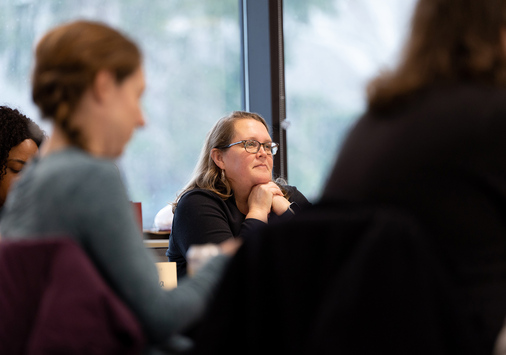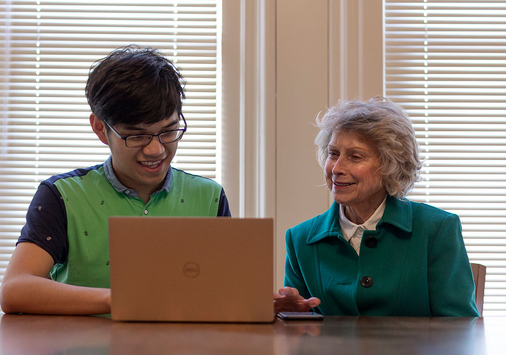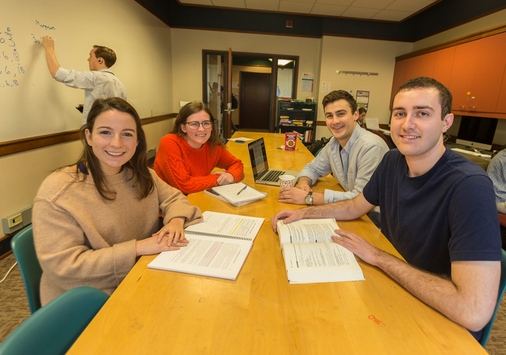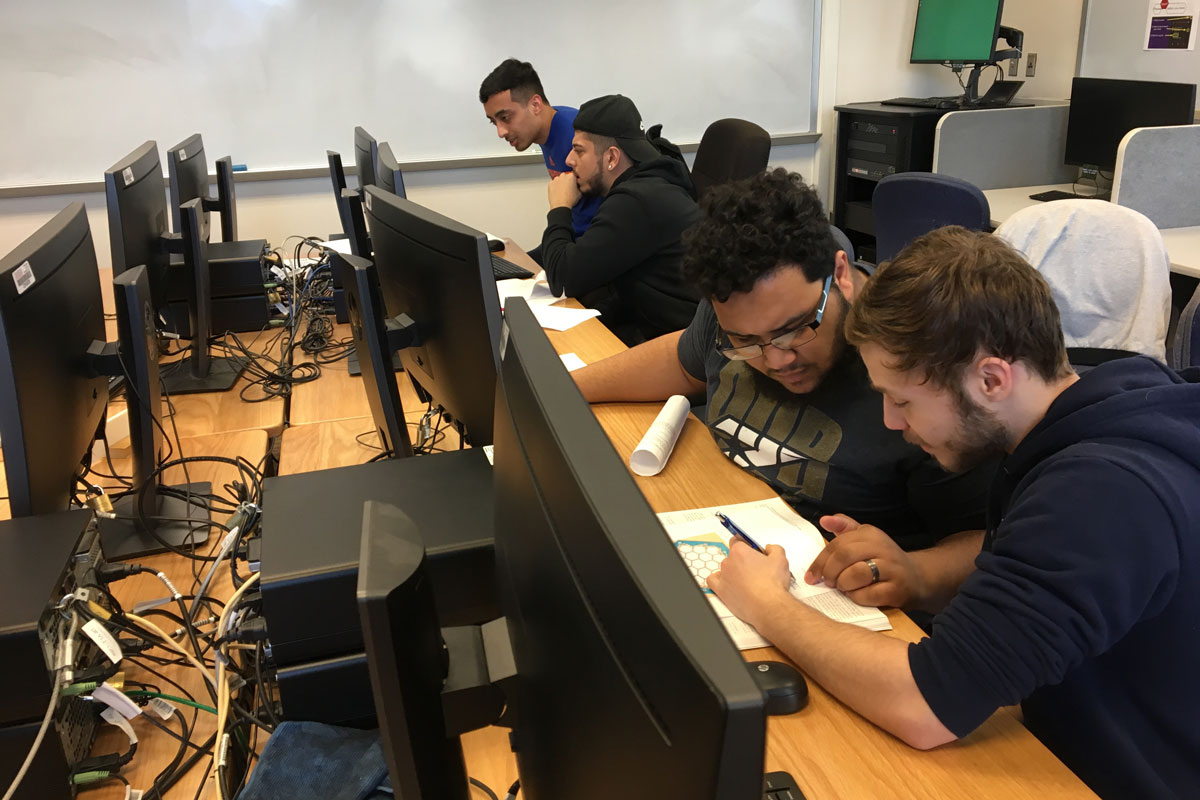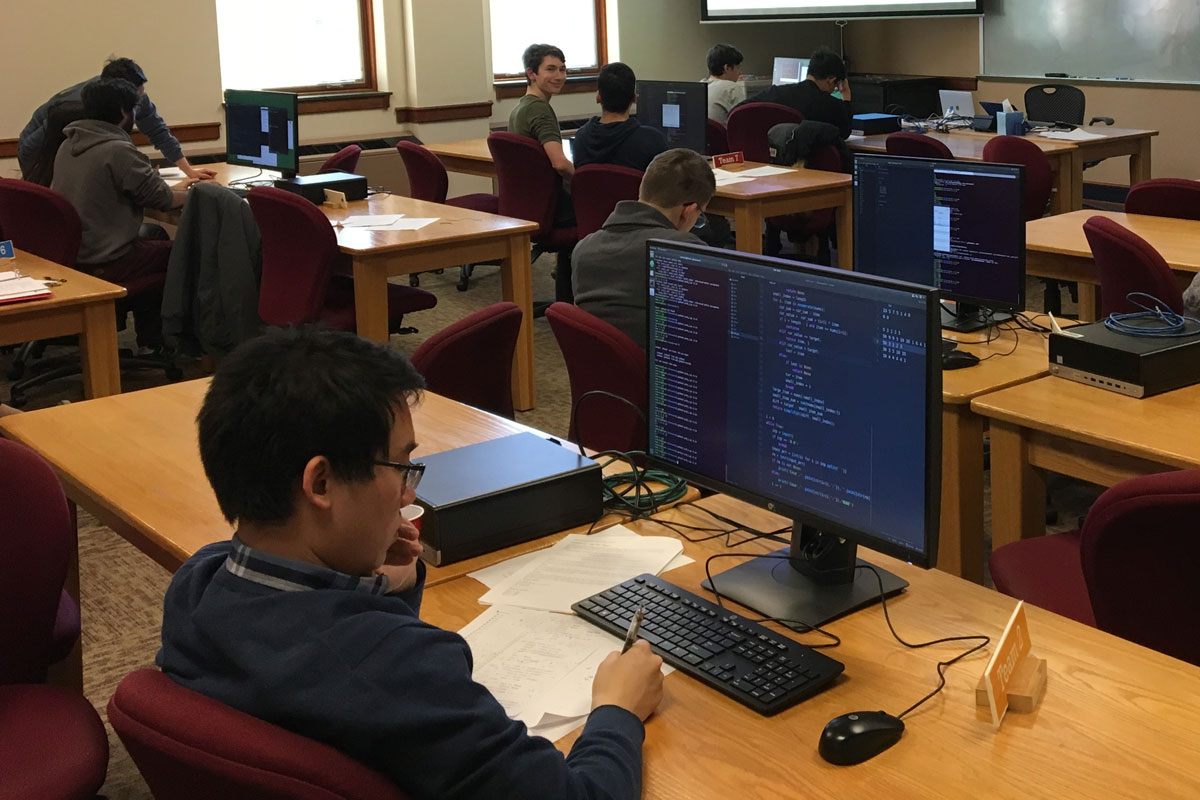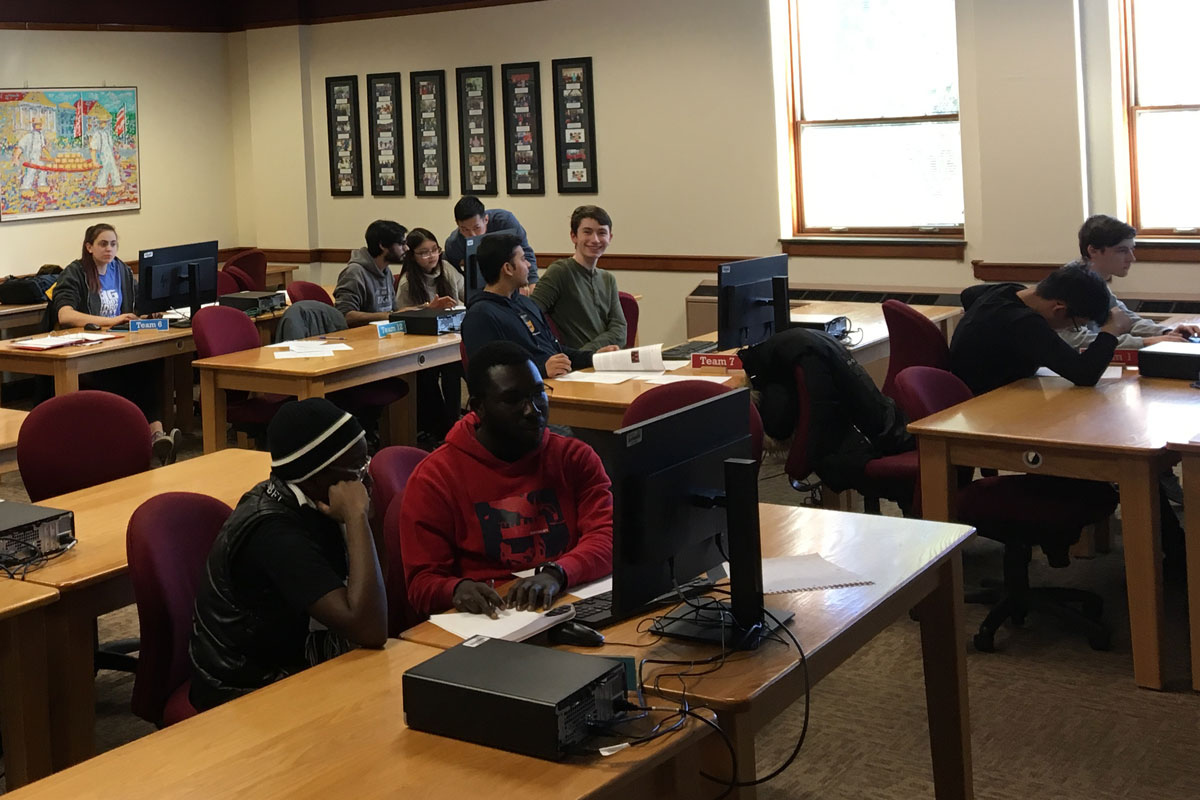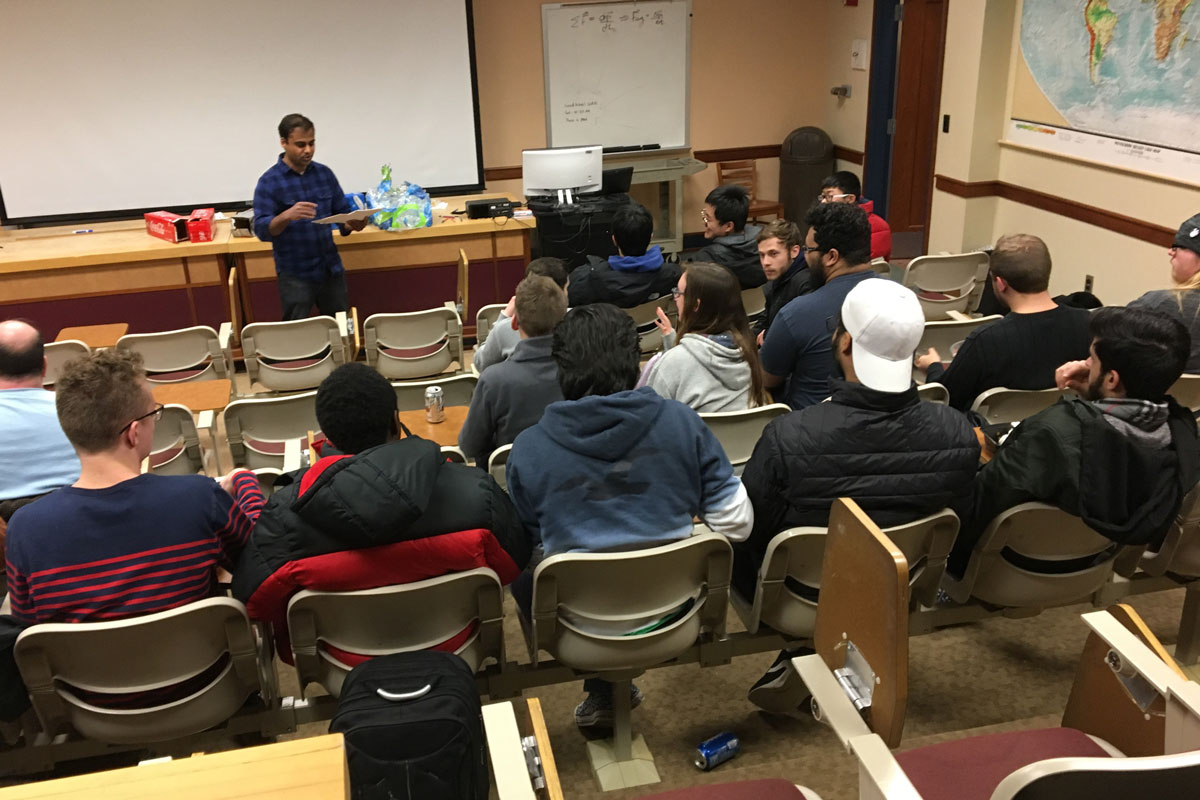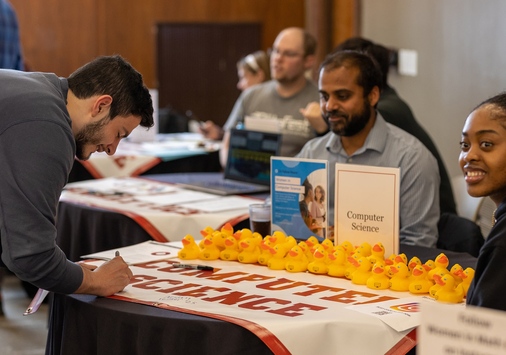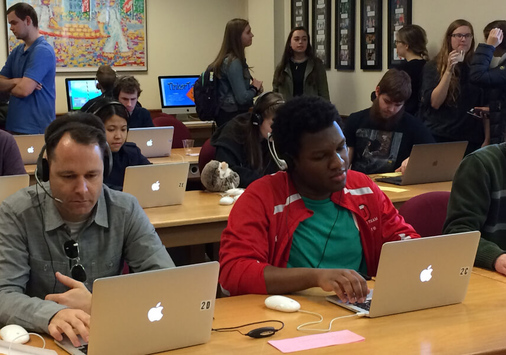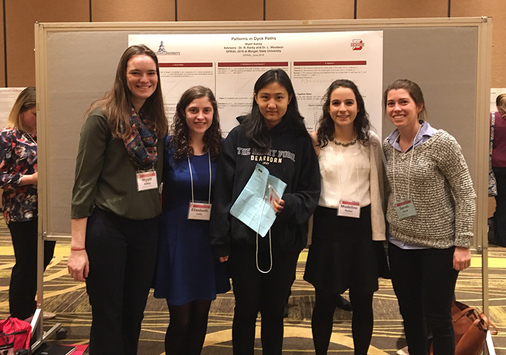On leap day this year, fifty students from Denison and nearby colleges (Oberlin, Ohio Wesleyan, University of Akron) came together to continue a 30-year-old tradition of competing at the Denison Spring Programming Contest.
The Denison Spring Programming Contest is a competition in which teams of up to four students compete against one another to solve six problems as fast as they can in a four-hour window. The problems are on a range of difficulty and topic. This year’s contest had questions on the game Settlers of Catan, figuring out which years are leap years, figuring out how to efficiently use measuring cups while cooking, and solving nonogram puzzles.
Denison has been sending programming teams to the regional contest since 1984. That first 4-person team (Will Hammett, Jeff Kent, Dan Kiskis, and Paul Loring) were the first in an unbroken line of teams we have fielded each year.
After the 1990 contest, Dr. Todd Feil thought the time was ripe for a smaller, kinder and gently local contest to allow some practice and fun for schools like ours. Our colleagues at other nearby liberal arts schools agreed and the Denison Spring Programming Contest was born.
The only things surviving the first four years are the problem sets. The participants and standings are lost. These were pre-internet days, pre-browser days, actually. Solutions were submitted by hand on floppy discs to the judges’ room. The students waited outside for the verbal results (with some helpful explanations from the judges). Soon, contest software for the DSPC was written and improved on, used until public-domain software was made available for a world-wide contest platform.
Those first contests had 8-10 teams participating. Our largest contests now have in the low 20’s. A gathering of 60 or 70 students and faculty advisors is always fun. The internet would allow off-site participation, but everyone gathering in one place gives a more festive atmosphere. Changing that has never been seriously considered.

